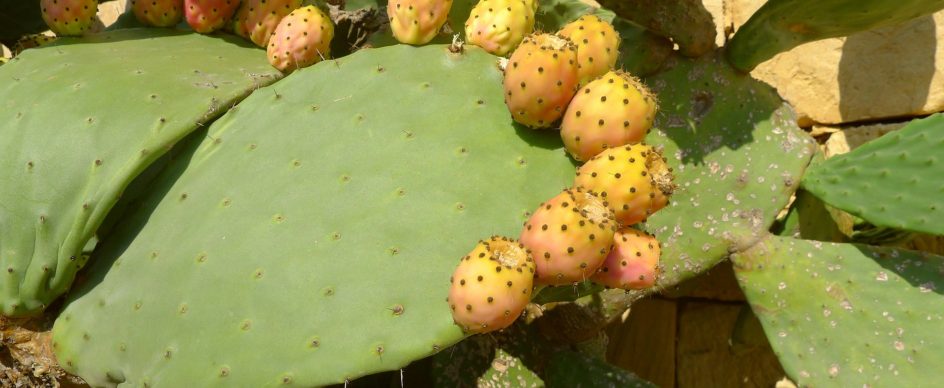
6 Maltese Fruits To Try Whilst In Malta!
- Nov 14, 2020
Maltese traditional cuisine is characterised by local produce...
While a number of fruit and vegetables are imported from abroad, this certainly does not diminish the significance of local produce. Local fruit and veggie markets such as the ones in Ta’ Qali and Mgarr are long-standing representations of this cultural and gastronomical significance.
Curious to see which fruits you should try whilst you’re in Malta? Keep reading!
The Prickly Pear
Season: July to October
Malta’s warm Mediterranean climate provides the perfect conditions for the cactus that produces the delicious prickly pear, or bajtar tax-xewk in Maltese. The Maltese prickly pear comes in various shades and sizes. The three most common variants are yellow (known “isfar” or “Malti” in native Maltese), red (“l-aħmar” or “l-ingliż”) and white ( “abjad” or “Franċiż”) The fruit’s prickly skin served as a direct inspiration for its name. Fear not, the insides are sweet, melon-like and juicy.
The Loquat
Season: April to May
The loquat or “naspli”, as it’s known in Malta, is Asiatic in origin. However, Malta’s warm springs provide the perfect climatic conditions for the loquat to grow. It was once an ornamental plant, but the Maltese have found various uses for it. In addition to being eaten as a whole, the leaves can be used to make herbal tea, while loquat jam with a touch of rosewater and lemon is a tasty jam that adds that extra special something to your afternoon tea menu.
The Fig
Season: July to August
The fig tree’s origins can be traced back to the Middle East. However, by time, it adapted well to the Mediterranean climate and is now synonymous with Malta and the Mediterranean region.
Two fig types primarily grow in Malta – the common fig that’s harvested in May and June, and the Farkizzan, gathered in July and August. They differ in colour, texture and size, but they’re equally delicious!
The Bambinella Pear
Season: June to August
The Bambinella pear is indigenous to the Maltese islands, where it has been cultivated for more than a thousand years. This mini-pear has a crisp texture, pinkish skin and a distinguishable sweet flavour. The Bambinella pear can be eaten raw and can also be boiled or baked. However, its small size makes it an excellent snack, and its uniqueness is best appreciated when eaten fresh.
The Maltese Orange
Season: October to April
The Maltese orange forms part of the blood orange “family”. It’s a small and highly-coloured variant that produces a blood-red juice and is known for its distinct colour and flavour. It’s thought to have originated in Italy as a mutation, but it’s grown extensively in Malta. Its burgundy colour makes it an excellent sorbet and dessert ingredient.
The Pomegranate
Season: September to December
The pomegranate, also known as rummiena in Maltese, is not a native Maltese species. However, the tree has been cultivated on the islands since ancient times. Therefore, the endemically Iranian and northern Indian fruit has travelled westwards and is now a key Mediterranean fruit; so much so that we have the privilege of enjoying the delicious taste of the rummiena every Autumn. The pomegranate is known for its antioxidant properties and adds a pleasant punchy flavour to any dish.




